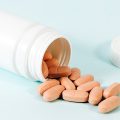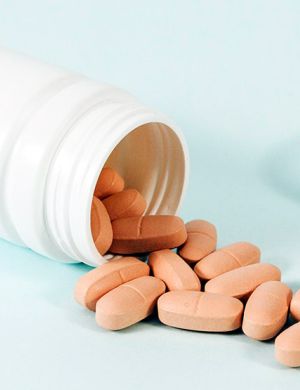
Medical Devices-USA/Europe Regulatory News – May 2023
USA (FDA)
Peripheral Percutaneous Transluminal Angioplasty (PTA) and Specialty Catheters – Premarket Notification (510(k)) Submissions)-Guidance for Industry and Food and Drug Administration Staff
This guidance document provides recommendations, including bench testing and coating characterizations for 510(k) submissions for peripheral percutaneous transluminal angioplasty (PTA) balloon and specialty catheters. and also provides anatomy-specific testing recommendations and expands on FDA’s current thinking for testing of these devices. FDA is issuing this guidance to clarify FDA’s premarket submission recommendations for PTA catheters and specialty catheters and to promote consistency across submissions.
The class II PTA balloon catheters regulated under 21 CFR 870.1250 and class II specialty catheters regulated under 21 CFR 870.1210 and 21 CFR 870.1250 with product codes listed in the document.
PTA balloon catheters refer to standard peripheral angioplasty balloon catheters. Specialty catheters can include but are not limited to the following 510(k) devices: infusion catheters, balloon catheters with unique design characteristics (e.g., cutting/scoring), and balloon catheters intended for specific indications (e.g., ISR, post-dilatation of stents).
A Risk-Based Approach to Monitoring of Clinical Investigations Questions and Answers – Guidance for Industry
This guidance provides information on risk-based approaches to monitoring the conduct of clinical investigations of human drug and biological products, medical devices, and combination products.
This guidance contains recommendations on planning a monitoring approach, developing the content of a monitoring plan, and addressing and communicating monitoring results. This guidance expands on the guidance for industry Oversight of Clinical Investigations – A Risk-Based Approach to Monitoring (August 2013) (the 2013 RBM guidance) by providing additional information to facilitate sponsors’ implementation of risk-based monitoring.
CANADA (HEALTH CANADA)
Medical Device Application Fee Form
Refer below link for the Medical Device Application fee form.
https://www.canada.ca/content/dam/hc-sc/documents/services/drugs-health-products/medical-devices/application-information/forms/medical-device-application-fee-form-eng.pdf
EUROPE
Best Practice Guidance for the Submission of Technical Documentation under Annex II and III of Medical Device Regulation (EU) 2017/745)
This best practice guidance document has been developed by members of Team NB who have reviewed the best practice guidance documents submitted by individual Team NB notified body members, with the purpose to develop a unified approach on the expectations of technical documentation submissions from manufacturers.
This technical documentation submission guidance is aligned to the requirements of Medical Devices Regulation [MDR] (EU) 2017/745, described in detail in Annexes II and III of Regulation (EU) 2017/745.
Transition to MDR underway for 63% of outgoing Directives certificates
Team-NB (The European Association Medical Devices – Notified Bodies), surveyed its 33 members to understand the state of the sector and gauge the progress of the transitions to MDR and the In Vitro Diagnostic Regulation (IVDR). One takeaway is that 2022 was the biggest year yet for submissions for certification under MDR. Team-NB called the trend “good news,” while cautioning about getting too encouraged by the evidence of an acceleration in the transition to the new regulations.
Be aware that this positivity needs to be considered, as many applications are for smaller scopes than those on the Directives certificates. We are told that it is mainly because MDR Technical Documentations for all devices are not ready. Moreover, it is to be noticed that the new legislation will require more certificates issued to the MDR Regulation than were issued to the Directives. For example, a certificate will be issued for each class IIb implantable device,” according to a press release from Team-NB.
Principles and Practices for Software Bill of Materials for Medical Device Cybersecurity
This document considers cybersecurity in the context of medical devices that either contain software, including firmware and programmable logic controllers (e.g., pacemakers, infusion pumps) or exist as software only (e.g., Software as a Medical device (SaMD)). The document emphasizes the roles and responsibilities of MDMs and HCPs and provides recommendations on the implementation of an SBOM and increased transparency in the use of software in medical devices, including in vitro diagnostic (IVD) medical devices. While primarily focused on MDMs and HCPs, we believe that other stakeholders, including but not limited to medical device users, regulators, and software component vendors, may also find the concepts discussed in this document useful.
Protection of the cyber healthcare environment is a shared responsibility of HCPs and MDMs. The SBOM is a common tool to support safety as it can help to mitigate against the potential for patient harm. This document is intended to:
- Provide recommendations for medical device manufacturers in SBOM generation, management, and distribution.
- Provide recommendations to healthcare providers on ingestion and management of an SBOM.
- Demonstrate SBOM use cases for risk management, vulnerability management, and incident response from the perspective of medical device manufacturers and healthcare providers.
Principles and Practices for the Cybersecurity of Legacy Medical Devices
This document is designed to provide concrete recommendations on how to apply the TPLC to legacy devices to aid in the implementation of the framework put forward in the preceding IMDRF N60 guidance. This document is complementary to the IMDRF N60 guidance, and the scope of relevant medical devices (including in vitro diagnostic (IVD) medical devices), as well as the focus on potential for patient harm remain unchanged.
It considers cybersecurity in the context of legacy medical devices that either contain software, including firmware and programmable logic controllers (e.g., pacemakers, infusion pumps) or exist as software only (e.g., Software as a Medical device (SaMD)). It is important to note that due to most regulators’ authority over medical device safety and performance, the scope of this guidance is limited to consideration of the potential for patient harm. For example, threats that could impact performance, negatively affect clinical operations, or result in diagnostic or therapeutic errors are considered in scope of this document. While other types of harm, such as those associated with breaches of data privacy, are important, they are not considered within the scope of this document.
Legacy devices were previously defined in IMDRF N60 guidance as medical devices that cannot be reasonably protected against current cybersecurity threats. This document therefore only addresses legacy devices within the context of cybersecurity, and not all other situations in which a device may be considered “legacy” (e.g., an older model of a medical device).
NEWS: MedTech Europe welcomes the recent publication of the European Commission’s Q&A on practical aspects of the implementation of Regulation (EU) 2023/607 and calls for continued work to address remaining challenges
After the political approval of both the European Parliament and the Council of the European Union, the European Commission’s proposal for an amendment of the Medical Devices Regulation and IVD Regulation has officially become law on 20 March 2023, with its publication in the Official Journal of the European Union.
Following this major milestone, the European Commission has published a Q&A on practical aspects related to the implementation of Regulation (EU) 2023/607 amending Regulations (EU) 2017/745 and (EU) 2017/746 as regards the transitional provisions for certain medical devices and in vitro diagnostic medical devices.
Medical Devices: Post Market Surveillance National Competent Authority Report Exchange Criteria and Report Form
This document provides guidance on:
- The criteria to be used for deciding when to exchange information,
- The procedures to follow when exchanging information,
- The forms to use for exchanging information,
- The requirements for IMDRF members participation in the NCAR Exchange Program.
SWITZERLAND (SWISS MEDIC)
Announcements on clinical trials with medical devices and performance studies with vitro diagnostic medical devices
Medical devices, accessories for medical devices, and devices without a medical purpose listed in Annex I of the MedDO are referred to as ‘medical devices’ in this information sheet. This information sheet is valid under the new regulation that came into force on 26 Mai 2021 and it is intended for sponsors of clinical investigations of devices, contract research organisations (CROs), and investigators. It provides guidance on the authorisation process, reporting requirements of sponsors, and the surveillance of clinical investigations by the Swiss Agency for Therapeutic Products, Swissmedic.
In vitro diagnostic medical devices and accessories for such devices are referred to as ‘IVD’ in this information sheet. This information sheet is valid under the new regulation that comes/came into force on 26 Mai 2022 and it is intended for sponsors of performance studies with IVD, contract research organisations (CROs), and investigators. It provides guidance on the authorisation process, reporting requirements of sponsors, and the surveillance by the Swiss Agency for Therapeutic Products, Swissmedic.
MDR/IVDR amendment: Equivalence with EU Regulation on Medical Devices ensured
In the EU, amendments of the EU-MDR 2017/745 regarding transitional periods for certificates, and of the EU-MDR and EU-IVDR 2017/746 regarding the elimination of deadlines for putting devices into service and placing on the market, were published on 20th March 2023. In view of bottlenecks at the notified bodies, these amendments implemented a number of measures in the EU, including extension – under certain circumstances – of the validity of certificates issued under the old legislation until 2027/2028 (depending on classification) and lifting of the deadlines for putting into service and placing on the market (EU-MDR and EU-IVDR).
Until then, as part of its enforcement of therapeutic products legislation, Swissmedic will tolerate the placement of devices on the market in Switzerland which are covered by a valid certificate according to the MDR and IVDR amendments. Anticipating the amendments to the ordinances in enforcement prevents discrepancies in market supply conditions between Switzerland and the EU and ensures legal compliance during the transitional phase. These measures ensure that the devices marketed in the EU continue to be available for Swiss patients.
UNITED KINGDOM (MHRA)
Medical devices – extended acceptance of CE marked medical devices on the Great Britain market
A statutory instrument has been laid in Parliament, which will enable an extended timeframe for acceptance of CE marked medical devices on the Great Britain market.
Subject to Parliamentary approval this will mean that CE marked medical devices will be accepted on the Great Britain market beyond the current deadline of 30 June 2023.
This will support the ongoing, safe supply of medical devices to Great Britain and is designed to ease the transition to a future strengthened regulatory framework for medical devices.
The government will ensure that there is a proportionate, phased approach to the implementation of the future regulatory framework, which supports system readiness and minimises the risk of supply disruption for UK patients.
Regulating medical devices in the UK
This guidance was updated primarily to reflect an intended extension to acceptance of CE marked medical devices on the Great Britain market beyond 30 June 2023. This guidance has been updated with changes to ‘Summary of key requirements for placing a device on the Great Britain market’, ‘Registrations in Great Britain’, ‘UKCA marking’, ‘CE marking and Notified Bodies’, ‘Labelling requirements’ and ‘Regulation of medical devices in Northern Ireland’ Reference Guides.
Register medical devices to place on the market
How to register your medical devices with the Medicines and Healthcare Products Regulatory Agency (MHRA) for the markets in Great Britain and Northern Ireland.
UPDATE
Added Guidance on registration of medical devices with an expired or expiring CE certificate that is valid under EU Medical Devices Regulations.
Medical devices: guidance for manufacturers on vigilance
Information for manufacturers of medical devices about reporting adverse incidents and field safety corrective actions to the MHRA.
Once a medical device has been placed on the UK market, the manufacturer must submit vigilance reports to the MHRA when certain types of incidents that involve their device occur in the UK. The manufacturer must also take appropriate safety action when required. The manufacturer will need to ensure their device meets appropriate standards of safety and performance for as long as it is in use.
UPDATE
Information and links to the MORE Submissions guidance and MORE production API guidance have been added.
Software and Artificial Intelligence (AI) as a Medical Device
Information for manufacturers, healthcare organisations and professionals, researchers, and patients & public on Software as a Medical Device (SaMD), including Artificial Intelligence as a Medical Device (AIaMD).
Software (including AI) plays an essential part in health and social care. In the UK, many of these products are regulated as medical devices (or as in vitro diagnostic medical devices (IVDs). This guidance provides access to important Software Group outputs that might be of assistance.
New statutory fees for MHRA services introduced from 1 April 2023
From Saturday 1 April 2023, new fees are being introduced for a range of MHRA services, to ensure the agency covers its costs and achieves financial stability in the years ahead.
The new fees will enable the MHRA to deliver a responsive and efficient regulatory service that protects and improves patient and public health by facilitating access to high-quality, safe, effective and innovative medical products.
Don’t miss out! Click here to stay in touch.
Categories
- Biopharma (47)
- Consumer Health (15)
- Cosmetics (8)
- Diagnostics (5)
- Digital Health (8)
- Food (2)
- Medical Device (100)
- OTC (3)
- Regulatory Intelligence (5)
- Standards (40)
Recent Blogs
Get the latest updates from Vistaar

Related Posts
CONNECT WITH US

Let's talk about how DDi can help you







